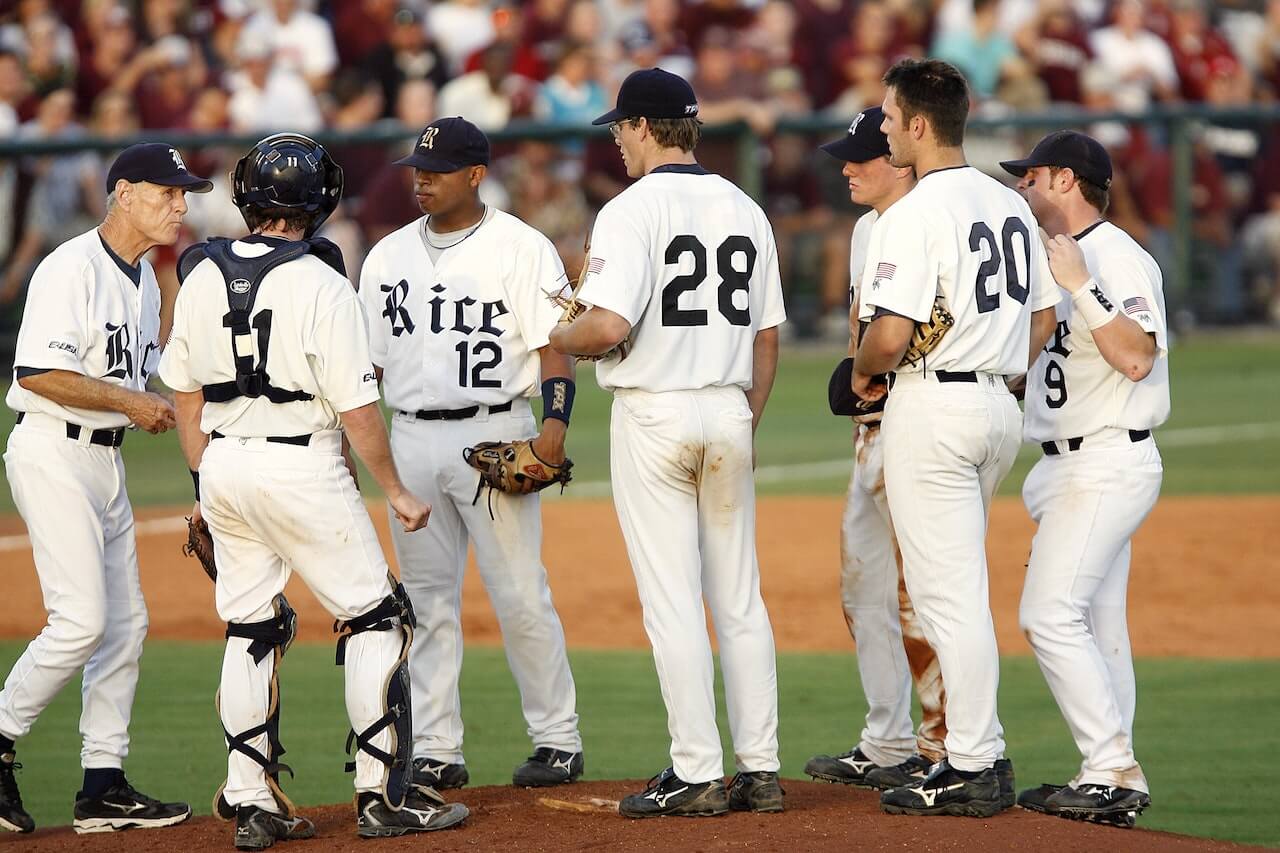A baseball team is made up of several players who work together to achieve a common goal .So how many players on a baseball team? The number of players on a baseball team varies depending on the level of play, but most teams have between 25 and 40 players.
In Major League Baseball (MLB), each team is allowed to have a maximum of 26 players on their active roster. However, during the playoffs, teams can expand their rosters to include up to 40 players. This allows teams to have more options and flexibility when it comes to making substitutions and managing their players.
At the college and high school level, baseball teams typically have smaller rosters, with around 25 players. This is due to budget constraints and the fact that these teams do not have as many games or as long of a season as professional teams. Regardless of the level of play, each player on a baseball team plays an important role in the success of the team.
Position Players
A baseball team consists of nine players on the field at any given time. These nine players are divided into two groups: position players and pitchers. Position players are responsible for fielding, hitting, and base running. They are typically divided into five positions:
- Catcher: The catcher is responsible for catching pitches thrown by the pitcher and making plays at home plate.
- First Baseman: The first baseman is responsible for fielding balls hit to the right side of the field and covering first base.
- Second Baseman: The second baseman is responsible for fielding balls hit to the left side of the field and covering second base.
- Third Baseman: The third baseman is responsible for fielding balls hit down the third base line and covering third base.
- Shortstop: The shortstop is responsible for fielding balls hit in the area between second and third base.
Each position requires a unique set of skills and physical attributes. Catchers, for example, need to have strong arms and quick reflexes, while first basemen need to be tall and have good hand-eye coordination.
Position players also have different roles when it comes to hitting. Some players, like first basemen and designated hitters, are known for their power hitting abilities, while others, like shortstops and second basemen, are known for their speed and ability to get on base.
Overall, the success of a baseball team depends on the collective effort of all its position players. Each player must work together to field, hit, and run the bases effectively in order to win games.
Pitchers
One of the most important positions on a baseball team is the pitcher. Pitchers are responsible for throwing the ball to the opposing team’s batters, with the goal of getting them out. In baseball, there are two main types of pitchers: starters and relievers.
Starting pitchers are typically the best pitchers on the team, and they are responsible for starting the game and pitching for the first few innings. They are expected to pitch at least five innings and ideally, they will pitch much longer. Starting pitchers are usually rested for a few days before their next start to ensure they are at their best.
Relief pitchers, on the other hand, are pitchers who come in after the starting pitcher has been taken out of the game. They are typically used to finish the game or to pitch in situations where the starting pitcher is struggling. Relief pitchers are often used in short bursts, pitching one or two innings at a time. There are different types of relief pitchers, including closers, who are brought in to pitch the final inning of the game when the team is winning by a small margin.
Overall, pitchers are an essential part of any baseball team, and a team’s success often depends on the quality of its pitching staff. A good team will have several strong starting pitchers and a reliable bullpen of relievers to back them up.
Reserves
Every baseball team has a roster of players that are designated as reserves. These players are not part of the starting lineup, but they are available to play in case of injuries, fatigue, or other reasons. Typically, a team will have around five to seven reserves on their roster, depending on the team’s needs and preferences.
Reserves can be a valuable asset to a team, as they provide depth and flexibility in case of unexpected situations. They can be called upon to pinch hit, pinch run, or play in the field if a starter is injured or needs a rest. In addition, reserves can be used strategically in certain situations, such as bringing in a defensive specialist to protect a lead late in the game.
It’s important for a team to choose their reserves carefully, as they need to have a diverse set of skills and be able to adapt to different situations. Some reserves may be better suited for defensive purposes, while others may excel at hitting or running. A good reserve player can make a significant impact on a game and help their team secure a win.
Conclusion
After analyzing the data, it is clear that the answer to how many players in baseball team is that the number of players on a baseball team can vary depending on the league and level of competition. The Major League Baseball (MLB) allows 26 players on the active roster, while the minor leagues may have up to 30 players. Additionally, college and high school teams may have different roster sizes based on regulations set by their governing bodies.
It is important to note that the number of players on a team can also change throughout the season due to injuries, trades, and other factors. Teams may also have players on their practice squad or reserve list who are not included in the active roster.
Overall, understanding the number of players on a baseball team is essential for players, coaches, and fans alike. By knowing the rules and regulations, individuals can better appreciate the game and its intricacies.







